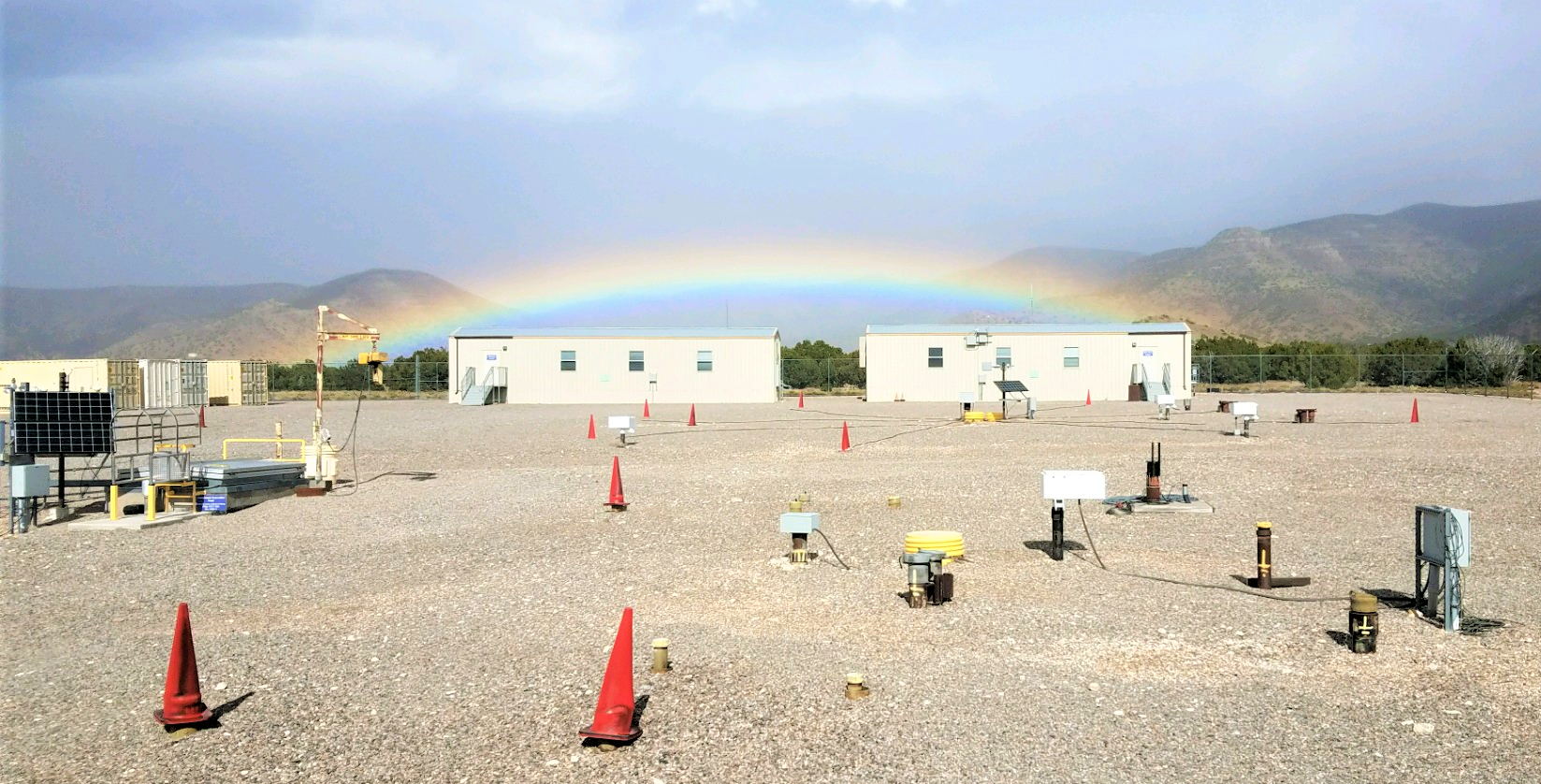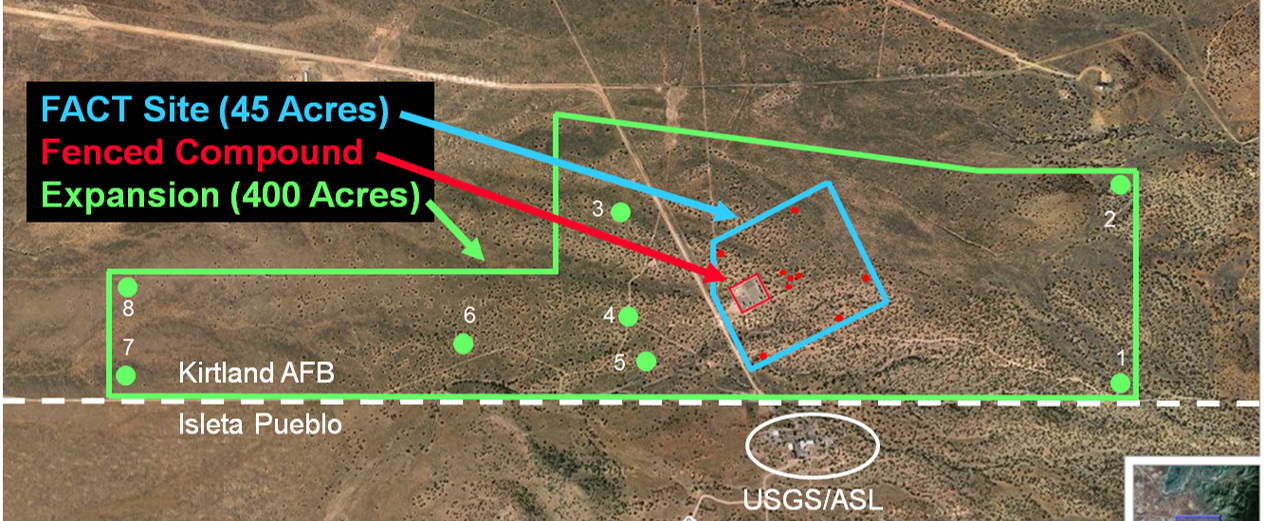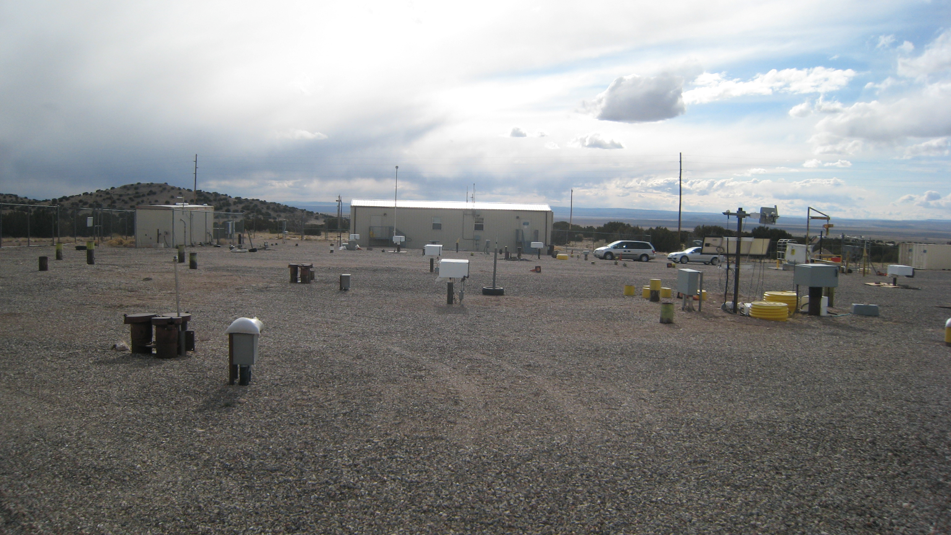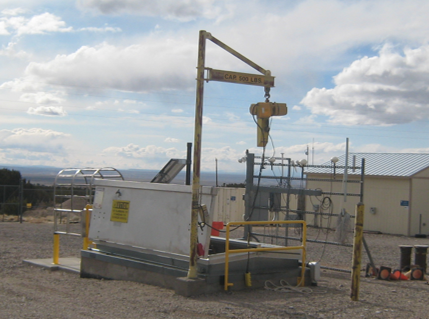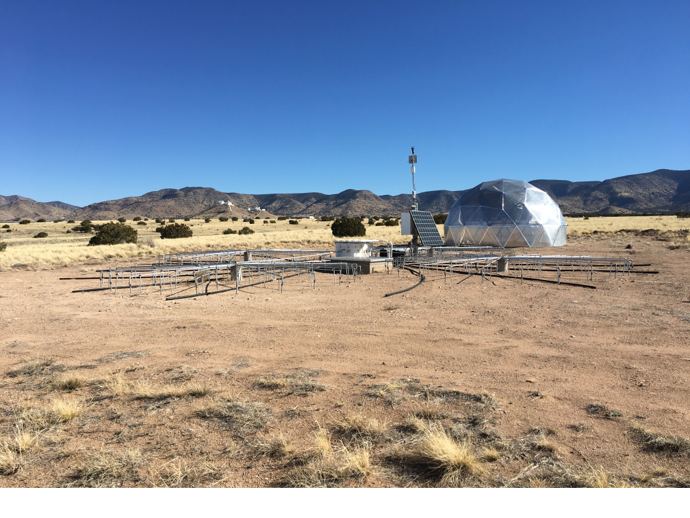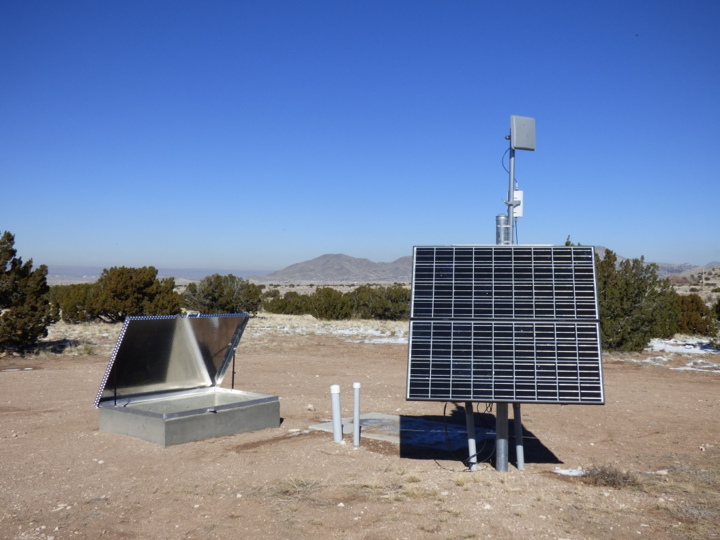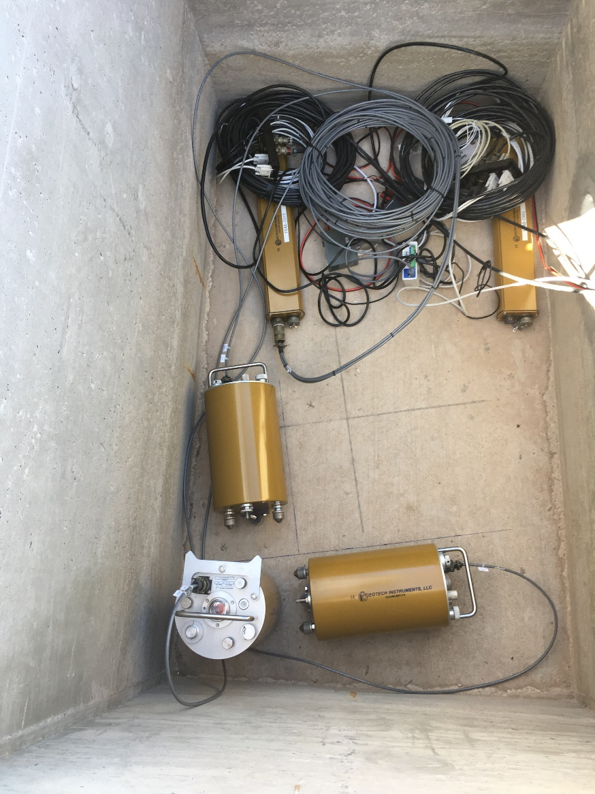Facility for Acceptance, Calibration, and Testing (FACT)
Sandia National Laboratories, Albuquerque, New Mexico
FACT Facts
The Sandia FACT Site provides the equipment and seismically quiet surroundings required for testing infrasound and seismic sensors, instrumentation, and monitoring systems. Custom software, specialized signal generators, high-resolution digitizing data recorders, and low-noise signal amplifiers all contribute to the site’s capacity for evaluating the performance of monitoring components and complete monitoring systems. The FACT Site consists of a 2-acre fenced “Property Protection” area, on a 45-acre use site, permitted from Kirtland Air Force Base (KAFB). The site enjoys low cultural noise and stable geological formations, important for seismic sensor testing, and is located in the southeast corner of KAFB.
Three mobile offices and a large workshop provide space for light laboratory work, systems assembly, and operations. The site infrastructure includes an underground instrumented vault and numerous boreholes, including several “shotgun” boreholes (tied together over their entire length) of various diameters, for deploying and testing borehole seismometers. There is a long-standing, nine-element seismic/infrasonic array on the 45-acre permit area. Additionally, the close proximity of the United States Geological Survey (USGS) seismic station provides an exceptionally well-characterized site with a 20-year history of seismic backgrounds and events.
The First 50 Years
In the early 1960s, Sandia personnel developed this large-scale, seismic/infrasonic testing capability. Its purpose was to evaluate seismic and infrasound systems and analysis techniques, for monitoring compliance with a nuclear explosion ban, or limitation treaties. A number of notable projects were conducted at the FACT Site during this time.
Sandians developed the Unmanned Seismic Observatory, which implemented the concepts of unmanned operation, high-quality seismic data gathering, and tamper-detection. Advancements in satellite communications made possible the National Seismic Station (NSS) in 1978. Sandia personnel deployed a Regional Seismic Test Network (RSTN) in 1981 and 1982, to evaluate the long-term operation of the NSS equipment, and to acquire regional seismic data for research on seismic monitoring and analysis techniques.
In the late 1980s, the Deployable Seismic Verification System (DSVS) provided high quality, high-reliability seismic data to verify compliance with the Threshold Test Ban Treaty (TTBT). In the 1990s, Sandia worked to develop the Global Telemetered Seismic Network (GTSN) for worldwide monitoring.
In the mid-1990s, DOE began funding Sandia to test technology and systems for monitoring a Comprehensive Nuclear-Test-Ban Treaty (CTBT) and for other U.S. national monitoring needs. An important part of this continuing effort has been the evaluation of new sensors and instrumentation for use in monitoring systems.
Sandia personnel continue to develop improvements in underground explosion monitoring capabilities under this program.
SNL continues to apply monitoring systems expertise for a variety of U.S. and international sponsors, performing systems evaluation and independent testing of next-generation seismic and infrasound sensor systems. These projects provide sponsors with assurance, by certifying that proposed systems operate as expected, meet performance requirements, and are calibrated properly, prior to deployment to an installation site in remote locations.
The Next 50 Years
In 2012, Sandia secured a land use permit from KAFB for the use of eight sites on 400 acres of unused open space surrounding the existing FACT Site permitted area. Sandia researchers have configured these eight locations for sensor deployment, with each location including a small, in-ground vault for seismometers, a concrete pad for the installation of above-ground vaults for infrasound sensors, and a pole to which solar power and radio data communication equipment are mounted.
These new locations enable testing of array geometries with up to 3.25-km apertures for realistic communications and operations. These sites are configured the same as U.S. waveform stations used in the International Monitoring System (IMS), allowing software, hardware, and component changes to be tested before being implemented at the actual IMS stations. Two of the sites are configured for Wind Noise Reduction System (WNRS) testing. The FACT Site’s unique capabilities make it a valuable resource that can enhance the performance of monitoring systems, through the testing of equipment ranging from research prototypes, to commercially manufactured equipment.
